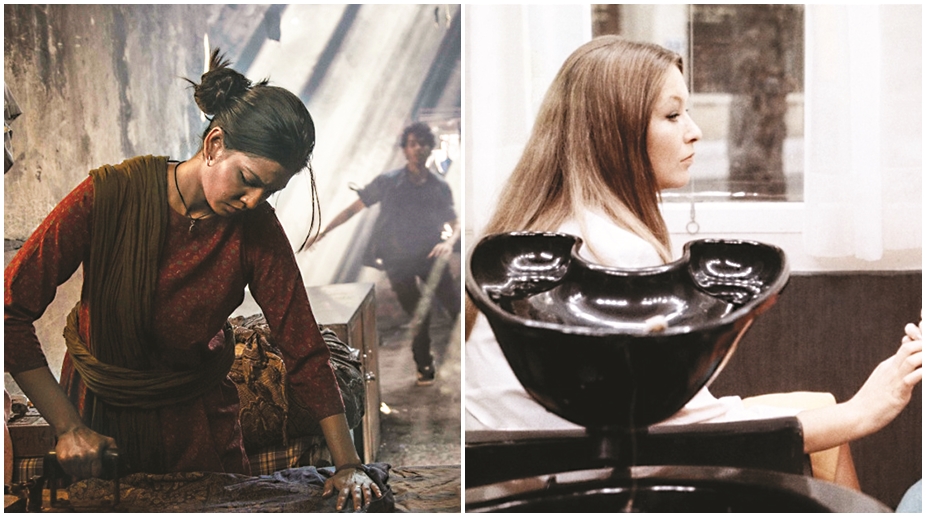It is only to be expected that the International Film Festival of India in Goa would be bigger in scope and global identity than state-run festivals run with support from local governments and organisations.
IFFI has a colourful past dating back to 1952 when a new generation of filmmakers, including Satyajit Ray, was attracted to the power of neo-realism from Italy and other countries in Europe. A lot of water has flowed down the Ganga till it has come to the 48th edition with all the support that it can expect from both the government and film fraternity. State-run festivals generate enthusiasm that is related to the new wave of cinematic ambitions caused by the arrival of digital technology, on the one hand, and space provided to local sentiments, on the other. Goa offers a national and international canvas and an environment that allows a more liberal exposure to diverse cultures.
Advertisement
All this makes Goa a cinematically more rewarding destination. It is the place where filmmakers, actors, technicians and film lovers in general would rather spend a few days absorbing the atmosphere to begin with and making all the artistic or personal discoveries that they would want. The choice ranges from the James Bond nine-film retrospective beginning with Dr No made in 1962 with the stunning images of Sean Connery and Ursula Andress in the British spy film shot largely in Jamaica to Majid Majidi’s expression of love for India in Beyond the Clouds that the Iranian director made in India in three languages — Hindi, English and Tamil. He considers his first Indian film, with which the festival opened, to be the culmination of his love for India that is rooted in the films of Satyajit Ray. Every festival has a star attraction. Goa should be thriving in Majidi’s presence as he narrates his experience of relating to the common man in Mumbai with a cast of newcomers as he has done in Children of Paradise — a cultural bond that may well develop into another film.
Even if some visitors were not be too excited about the Bond adventures that may not have been as gripping after Connery had retired, the festival scene should have come alive with the presence of the tennis star Vijay Amritraj who has had a reasonably satisfying encounter with Hollywood as well as Kabir Bedi. Both had been seen in Octopussy.
Goa allows a cross-section of filmmakers to descend on the festival scene. They could be representing the real Bollywood and lending some glamour to the occasion like Sridevi, Katrina Kaif and Huma Qureshi. Or they could represent another side of Indian cinema like Muzaffar Ali who joins his counterparts from Israel, Russia, Australia and Britain in judging the 15 entries for Golden and Silver Peacock with a whopping collective prize of Rs 1 crore.
The revival of the international competition brings great expectations about sought-after entries. It is also a veiled recognition of Goa’s attractions despite the surprising absence of Indian competitive entries at major festivals. It has been the story for quite some time. If Goa has grown as a sought-after festival destination, it is not just because of the prospects of boisterous beach parties woven into the pleasures of contemporary and classic delights on the screen.
New ideas have cropped up to contribute meaningful dimensions of the festival. Veterans and scholars should have grabbed the opportunity to experience the restored classics of Godard (One or Two Things I know about Her), Hitchcock (Lodger), Ozu (Flavour of Green Tea over Rice), Tarkovsky (Sacrifice) and Mrinal Sen (Khandhar). Many more such works need to be rediscovered. Fortunately, festivals provide the platform and the Kolkata festival made a stunning contribution with a little known Godard film made for television in the 1980s.
Two other events have contributed to the overall impact. Master classes and pitching sessions represented the academic side that was supposed to appeal to the growing number of aspiring filmmakers emerging from universities and film schools. Many more are ready to move into the professional world with creative ideas that they would like to execute with limited budgets. The Biennale College of the Venice film festival has set up as programme that enables promising newcomers to work with masters on small budgets. Four such films, one of them by an Indian, are in Goa raising hopes that many more with the potential can look for international support. Equally significant is IFFI’s collaboration with Unesco and other organisations to offer space for the differently-abled to access the joy of films through audio descriptions. For the first time, Goa experimented with creative young minds providing narration for visuals and non-dialogue portions to help the visually and hearing impaired enter the exciting world of images.
These developments are more remarkable than the complaints, which ritually crop up every year. One film made by a director from Pakistan based in the US was first selected and then dropped while a few angry voices are heard elsewhere. If these were talking points, far more significant are the administrative changes brought to the festival with signs of rethinking on the role of the Directorate of Film Festivals. What finally matters is the climate for lively social, artistic and creative exchanges. That would be the best reason for celebrating 50 years of IFFI in 2019.











